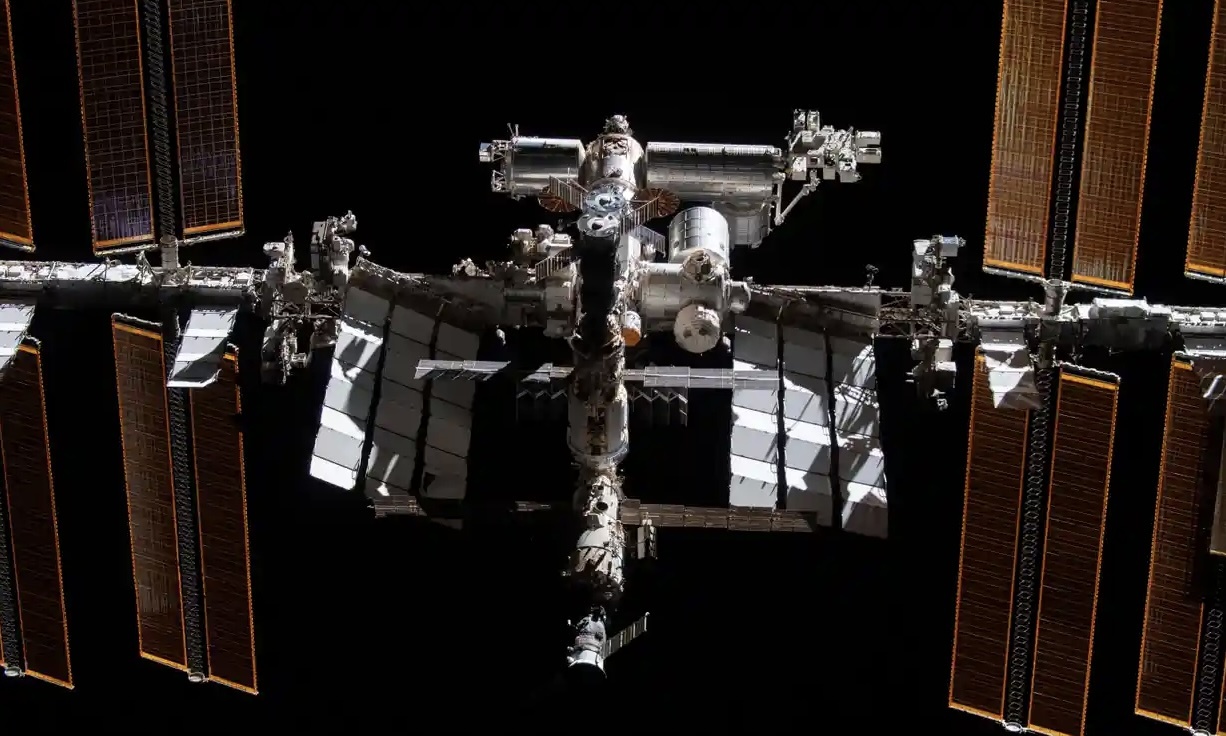28.06.2024
The six US astronauts aboard International Space Station rush to their spacecrafts in case of emergency departure

A defunct Russian satellite has broken up into nearly 200 pieces of debris in orbit, forcing astronauts on the International Space Station to take shelter for about an hour and adding to the mass of space junk already in orbit, US space agencies said.
There were no immediate details on what caused the breakup of the Resurs-P1 Russian Earth observation satellite, which Russia declared dead in 2022.
US Space Command, tracking the debris swarm, said there was no immediate threat to other satellites.
The event took place at around 10am mountain time (1600 GMT) on Wednesday, Space Command said. It occurred in an orbit near the space station, prompting US astronauts onboard to shelter in their spacecraft for roughly an hour, Nasa’s Space Station office said.
Russian space agency Roscosmos, which operated the satellite, did not respond to a request for comment or publicly acknowledge the event on its social media channels.
US Space Command, which has a global network of space-tracking radars, said the satellite immediately created “over 100 pieces of trackable debris”.
By Thursday afternoon, radars from US space-tracking firm LeoLabs had detected at least 180 pieces, the company said.
Large debris-generating events in orbit are rare but of increasing concern as space becomes crowded with satellite networks vital to everyday life on Earth, from broadband internet and communications to basic navigation services, as well as satellites no longer in use.
The satellite’s breakup was at an altitude of roughly 220 miles (355km) in low Earth orbit, a popular region where thousands of small to large satellites operate.
“Due to the low orbit of this debris cloud, we estimate it’ll be weeks to months before the hazard has passed,” LeoLabs said in a statement to Reuters.
The roughly 25,000 pieces of debris bigger than 4 ins (10cm) in space caused by satellite explosions or collisions have raised concerns about the prospect of a Kessler effect - a phenomenon in which satellite collisions with debris can create a cascading field of more hazardous junk and exponentially increase crash risks.
Russia sparked strong criticism from the US and other western countries in 2021 when it struck one of its defunct satellites in orbit with a ground-based anti-satellite (Asat) missile launched from its Plesetsk rocket site. The blast, testing a weapon system ahead of Moscow’s 2022 invasion of Ukraine, created thousands of pieces of orbital debris.
In the roughly 88-minute window of Resurs-P1’s initial breakup, the Plesetsk site was one of many locations on Earth it passed over, but there was no immediate indication from airspace or maritime alerts that Russia had launched a missile to strike the satellite, said Jonathan McDowell, a space tracker and Harvard astronomer.
“I find it hard to believe they would use such a big satellite as an Asat target,” McDowell said. “But, with the Russians these days, who knows.”
He and other analysts speculated the breakup more likely could have been caused by a problem with the satellite, such as leftover fuel onboard causing an explosion.
What happens to old satellites
Dead satellites either remain in orbit until they descend into Earth’s atmosphere for a fiery demise years later, or, in widely preferred – but less common – circumstances, they fly to a “graveyard orbit” some 22,400 miles (36,000km) from Earth to lower the risk of crashing into active satellites.
Roscosmos decommissioned Resurs-P1 over onboard equipment failures in 2021, announcing the decision the following year. The satellite has since appeared to be lowering its altitude through layers of other active satellites for an eventual atmospheric re-entry.
The six US astronauts currently on the space station were alerted by Nasa mission control in Houston around 9pm ET on Wednesday (0100 GMT on Thursday) to execute “safe haven” procedures, where each crew member rushes into the spacecraft they arrived in, in case an emergency departure is required.

Nasa astronauts Butch Wilmore and Suni Williams boarded their Starliner spacecraft, the Boeing-built capsule that has been docked since 6 June in its first crewed test mission on the station.
Three of the other US astronauts and a Russian cosmonaut went into SpaceX’s Crew Dragon capsule, which flew them to the station in March, while the sixth US astronaut joined the two remaining cosmonauts in their Russian Soyuz capsule, which ferried them there in September last year.
The astronauts emerged from their spacecraft roughly an hour later and resumed their normal work on the station, Nasa said.
The prospect of satellite collisions and space warfare have added urgency to calls from space advocates and lawyers to have countries establish an international mechanism of managing space traffic, which does not currently exist.
Quelle: The Guardian
